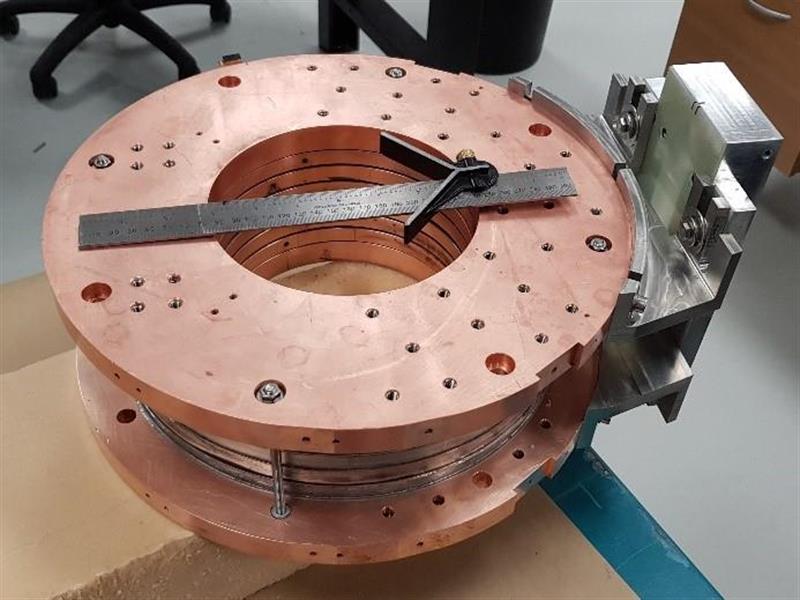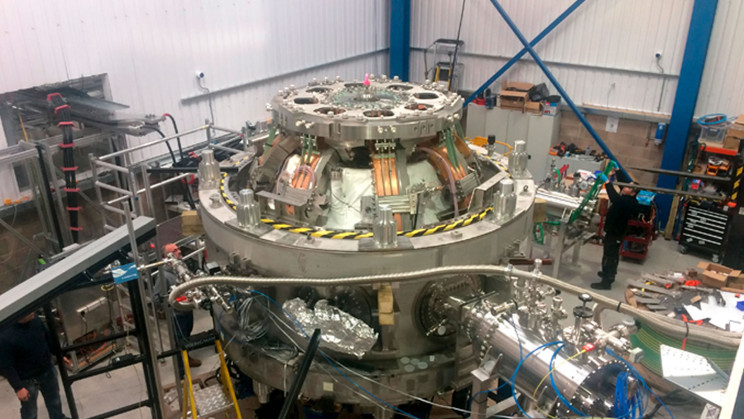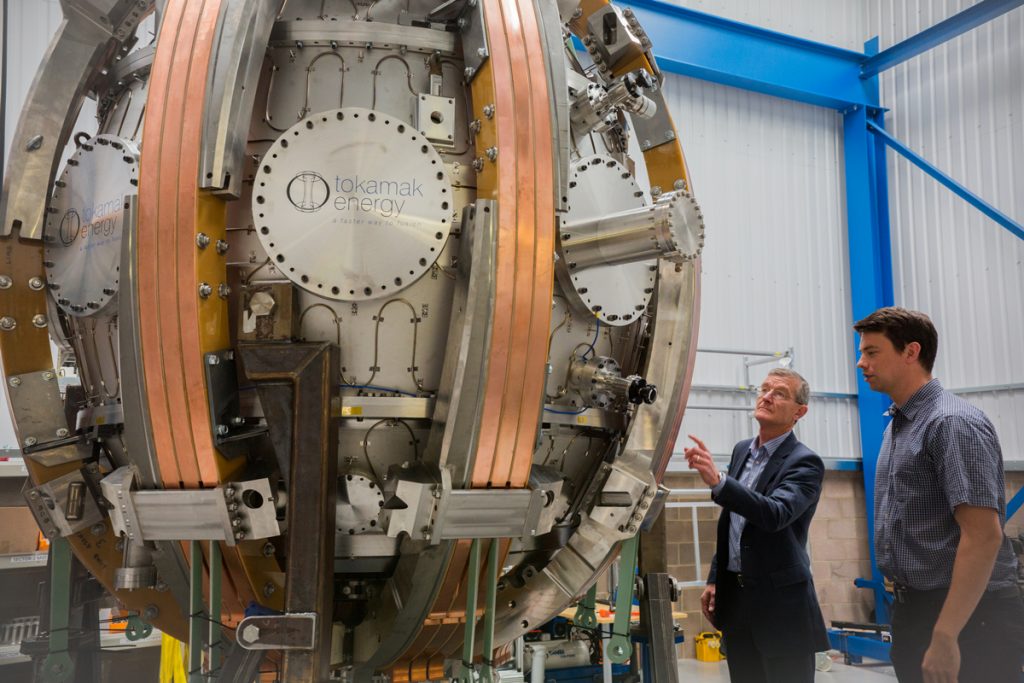Tokamak Energy has announced that cryogenic power electronic technology testing for the high-efficiency operation of its superconducting magnets has been completed successfully.
The organisation is developing fusion technology with spherical tokamaks and high-temperature superconducting (HTS) magnets. According to Tokamak Energy, tests of the new power electronics revealed twice the efficiency of previous ones, resulting in decreased power required to cool the HTS magnets, lowering the cost of potential fusion power plants, a critical step toward commercializing and scaling fusion technology.
In tokamak equipment, superconducting magnets are used to concentrate and isolate plasma to reach the high temperatures essential for fusion. However, cryogenic cooling is one of many energy concerns. Therefore, a higher-efficiency power conversion within a vacuum cryostat is used in the new method.

Tokamak Energy is developing the ST40 prototype in collaboration with Oak Ridge National Laboratory and Princeton Plasma Physics Laboratory. As part of the Advanced Modular Reactor initiative, the United Kingdom government provided the research funding.
In the 1980s, Alan Sykes, a co-founder of Tokamak Energy, conducted theoretical research that demonstrated how changing tokamak geometry improved performance. Combining the greater efficiency of the spherical tokamak with the improved magnetic confinement given by HTS magnet technology gave a possible path to commercial fusion.
Tokamaks use magnetic fields to confine fusion fuels by trapping electrically charged plasma particles. HTS magnets have rare earth copper barium oxide thin strips with less than 0.1 mm thickness. When formed into coils, they can generate far greater magnetic fields while taking up far less space.
Tokamak Energy is collaborating with the European Organization for Nuclear Research (CERN) to build scalable HTS magnets for fusion power modules.

Tokamak Energy is working on two fundamental technologies: tiny spherical tokamaks and high-temperature superconducting magnets (HTS).
“These enabling technologies are essential to the development of economic fusion,” said CEO Chris Kelsall.
According to the business, the fusion power modules can generate 500MW of heat or 150MW of electricity. Commercial fusion energy requires heating plasma to temperatures of 100 million degrees Celsius. Currently, Tokamak Energy is working on its ST40 design.
“If so, Tokamak Energy will be the first commercial fusion developer to achieve this key milestone in a controlled plasma,” Kelsall said. “However, we also believe there are other key ingredients which are essential to achieve commercial fusion.”
The ST40 managed to reach 15 million degrees Celsius in its first year. The target is to overcome repulsive interactions between deuterium and tritium ions and bring them close enough to burn at 100 million degrees Celsius. As an outcome, ST40 would be the first privately-funded fusion machine capable of attaining the temperatures required for commercial fusion.
The new tests indicate that system efficiency could be enhanced further. The company offers methods to cut the cost of HTS magnets in half. A new power source, for example, may enable continuous operation at 1,000-A and pulsed operation at 2,000-A.
According to Kelsall, the recent Glasgow Climate Change Conference “reinforced the urgent need for new base-load sources of clean energy to be deployed globally to replace carbon-intensive fossil fuels.”

Fusion energy, once commercialised, will be clean, low-cost, plentiful, and safe. The global investor community acknowledged the importance of fusion, with significant funding being deployed to private sector companies in late 2021.
“The race to commercialize fusion will gather further pace next year as fusion companies make further technology advances,” Kelsall concluded. “Applications developed within the fusion sector will present substantial crossover opportunities in different industries, including aerospace, industry, and health care. As a result, 2022 will see the public and private sectors continue to work closely, to capitalize on the immense opportunities that fusion offers. This augurs well for the future.”
Fusion is a zero-carbon energy source that produces no hard radioactive waste and can supply low-cost energy, according to Tokamak Energy. In addition, because of fusion power’s safety characteristics, site requirements are less restrictive than conventional nuclear power, enabling deployment closer to population and industrial centres. Compact fusion is also less inexpensive, quicker to construct and deploy, and capable of entirely using new materials and technology.


